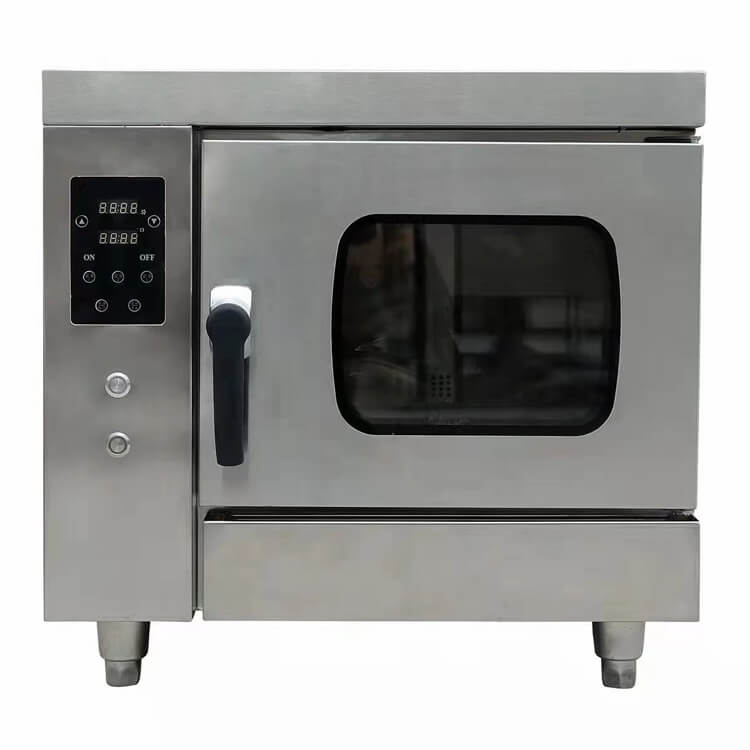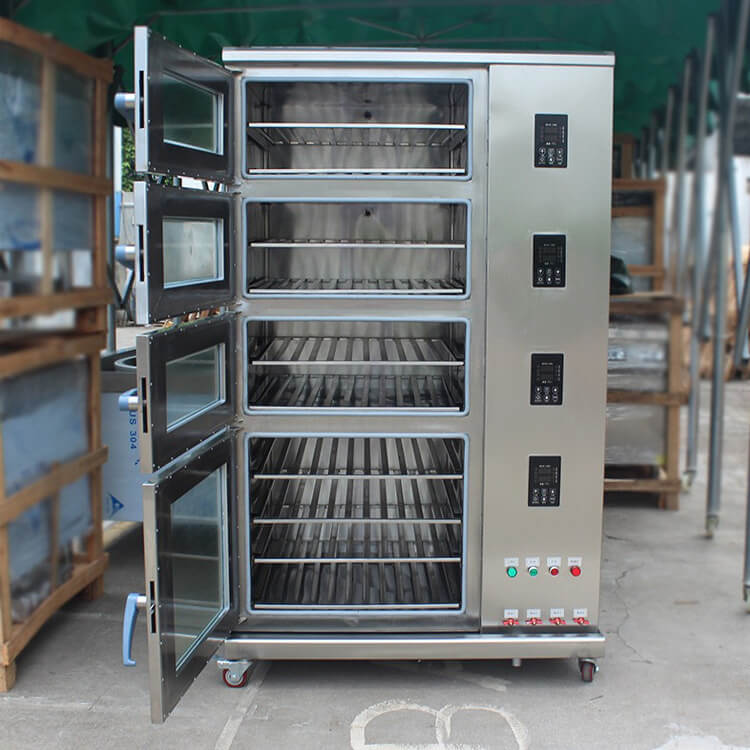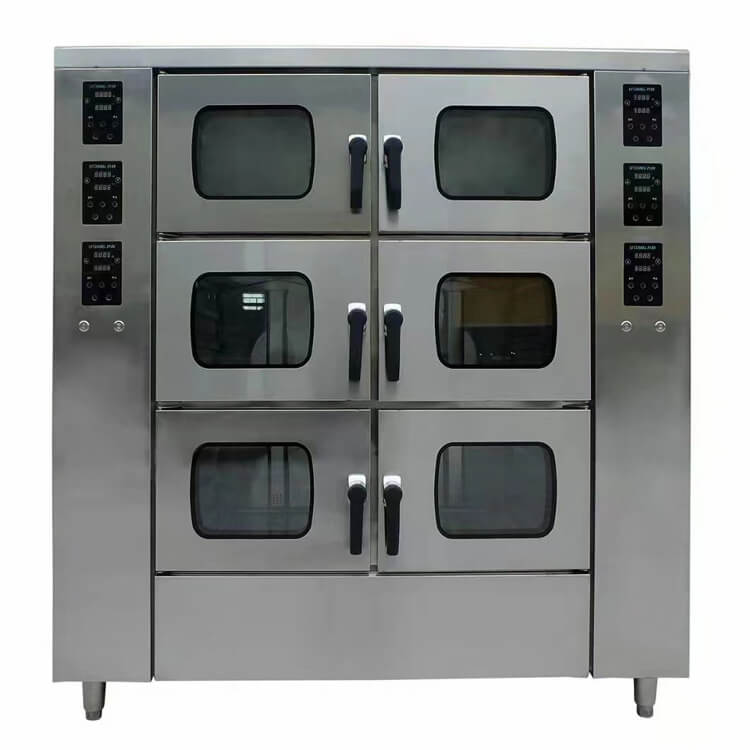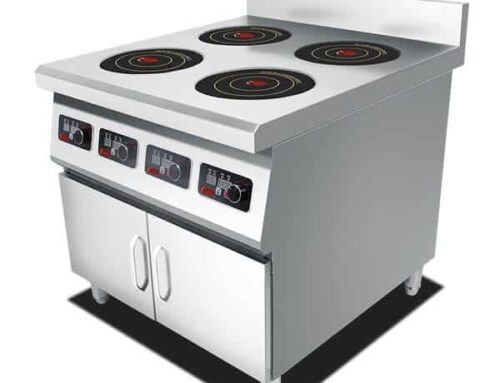Total Cost of Ownership for Restaurant Equipment: Installation, Energy & Maintenance
For restaurant owners and commercial kitchen managers, restaurant equipment is more than just an upfront purchase—it’s a long-term investment where total cost of ownership (TCO) often exceeds the initial price by 40–60%. AT Cooker’s 2024 survey of 200 restaurant operators found that 73% underestimated TCO by focusing only on purchase price, leading to budget shortfalls within 2 years. This guide breaks down TCO for critical commercial kitchen equipment—with a focus on AT Cooker’s commercial food steamer (our top-selling ZFGT-E3 model)—and shows how to calculate, reduce, and budget for costs like installation, energy, and maintenance.
1. Initial Purchase Price: 60–70% of Total Cost of Ownership
The upfront cost of restaurant equipment makes up the largest share of TCO—60–70% for most commercial kitchen tools. For AT Cooker’s ZFGT-E3 commercial electric steamer (a 23L floorstanding model popular with mid-size restaurants), the initial price ranges from $2,200–$2,500—this aligns with industry averages for high-quality commercial steamers (budget models start at $1,500 but have higher long-term costs).
Why this matters: Cutting corners on upfront price often increases TCO. For example, a $1,500 budget steamer may have a 3-year lifespan, while AT Cooker’s $2,300 model lasts 7+ years. Spreading the initial cost over lifespan, the budget steamer costs $500/year, vs. $328/year for AT’s model. A Chinese restaurant in Chicago confirmed: “We bought a budget steamer first—it lasted 2 years. Switching to AT Cooker’s model saved us $600/year in replacement costs.”
2. Installation Costs: 10–20% of Equipment Price
Installation adds 10–20% to the cost of commercial kitchen equipment—a often-overlooked expense. For AT Cooker’s ZFGT-E3 steamer, professional installation costs $220–$450 (10–20% of the $2,300 purchase price)—this includes electrical wiring (220V/380V depending on region), water line connection, and safety testing.
What drives installation costs:
- Electrical upgrades: If your kitchen lacks a 220V dedicated circuit (common in older buildings), adding one costs $300–$500 extra.
- Plumbing adjustments: The ZFGT-E3 needs a ½-inch water line with a shut-off valve—adapting existing plumbing adds $150–$250.
- Modular design savings: AT Cooker’s steamers have a modular build (separate water tank, control panel) that reduces installation time by 30% vs. non-modular models—saving $100–$150 per unit.
A hotel in Las Vegas saved on installation: “AT Cooker’s modular steamer fit into our existing water/electrical setup—we only paid $220 for installation, vs. $400 for our old non-modular model.”
3. Energy Consumption: 15–25% of TCO Over Lifespan
Energy costs represent 15–25% of TCO for restaurant equipment—and efficiency is the biggest driver. AT Cooker’s ZFGT-E3 steamer has a 92% energy efficiency rating (vs. 75% for budget models)—this translates to significant annual savings.
Calculating energy costs (based on 8 hours/day, 6 days/week, $0.15/kWh):
- AT Cooker ZFGT-E3: 9KW power × 92% efficiency = 9.78kWh/hour. Daily cost: 9.78 × 8 × $0.15 ≈ $11.74. Annual cost (288 days): $11.74 × 288 ≈ $3,381 over 7 years: $3,381.
- Budget steamer: 9KW power × 75% efficiency = 12kWh/hour. Daily cost: 12 × 8 × $0.15 = $14.40. Annual cost: $14.40 × 288 = $4,147 over 3 years: $12,441.
The ZFGT-E3 saves $9,060 in energy costs over its lifespan—more than offsetting the $800 higher upfront price. A catering company in Florida said: “Our monthly electric bill dropped $230 after switching to AT’s steamer—we recovered the extra upfront cost in 4 months.”
4. Maintenance & Repair: 5–10% Annually Based on Usage
Maintenance and repairs add 5–10% of the equipment’s value annually—for the ZFGT-E3 ($2,300), that’s $115–$230/year. AT Cooker’s preventive maintenance plan reduces this to $80–$150/year by catching issues early (e.g., descaling heating elements, replacing gaskets).
Common maintenance costs for commercial steamers:
- Descaling solution: $25–$40/quarter (prevents scale buildup in heating elements).
- Gasket replacement: $50–$80/year (seals the steamer door to prevent steam leaks).
- Heating element repair: $150–$300 (avoided with regular descaling—AT’s elements last 5+ years).
Budget steamers have higher repair costs: their heating elements fail every 1–2 years (vs. 5+ for AT’s), and gaskets need replacement twice as often. A breakfast café owner noted: “Our budget steamer needed a new heating element every year ($200). AT’s steamer hasn’t needed any major repairs in 3 years.”
5. Preventive Maintenance: Reducing Unexpected Costs
Regular preventive maintenance cuts unexpected breakdown costs by 40% and extends restaurant equipment life by 30%. AT Cooker’s ZFGT-E3 includes a free maintenance checklist, and our optional $300/year maintenance plan covers quarterly service visits (cleaning, testing, minor repairs).
What preventive maintenance includes for the ZFGT-E3:
- Descaling the heating element and water tank to prevent overheating.
- Inspecting the water line for leaks and cleaning the filter.
- Testing the safety valves (pressure relief, overheat protection) to ensure compliance.
- Lubricating the door hinges to prevent wear.
A hotel in Texas used this plan: “We had a technician spot a faulty valve during a visit—they replaced it for free. If we’d ignored it, the valve would have failed during a banquet, costing us $500 in downtime.”
“I used to skip preventive maintenance to save money—big mistake. Our steamer broke during lunch rush, and we lost $800 in sales while waiting for repairs. Now we use AT Cooker’s maintenance plan—it costs $300/year, but it’s saved us $2,000 in downtime and repairs.” — Maria, Café Owner
6. Energy-Efficient Equipment: Higher Upfront Price, Lower TCO
Energy-efficient commercial kitchen equipment often costs 10–30% more upfront, but it reduces TCO by 20–30% over lifespan. The ZFGT-E3’s 92% efficiency (vs. 75% for budget models) is achieved through:
- Insulated stainless steel body (reduces heat loss by 50%).
- Variable power settings (uses only 4KW for small batches, vs. 9KW for full loads).
- Auto-shutoff when not in use (saves 15% on energy).
A chain of 10 sushi restaurants calculated the difference: “AT Cooker’s steamers cost $800 more each, but we save $230/unit/year in energy. Over 7 years, that’s $1,610 in savings per unit—more than doubling the upfront investment.”
7. Modular Designs: Lower Installation & Maintenance Costs
Modular restaurant equipment (like AT Cooker’s ZFGT-E3) has separate, replaceable components—this cuts installation and maintenance costs by 20–30%. For example:
- Installation: Modular parts fit through narrow kitchen doors, avoiding costly renovations (e.g., removing doorframes) needed for non-modular steamers.
- Maintenance: If the water tank fails, you replace just the tank ($300) instead of the entire steamer ($2,300).
A small bistro in Seattle benefited from this: “Our kitchen has a narrow doorway—non-modular steamers would have required $1,000 in renovations. AT’s modular model fit easily, saving us the extra cost.”
8. Warranty & Service Contracts: Reducing TCO Risks
Warranty coverage and service contracts have a huge impact on TCO. AT Cooker offers a 2-year standard warranty for the ZFGT-E3, covering parts, labor, and shipping—this is twice as long as budget brands (1 year) and includes “wear parts” like gaskets (often excluded elsewhere).
For extended protection, our 3-year service contract ($600) adds:
- Onsite service within 48 hours (critical for busy kitchens).
- Free replacement parts (no deductibles).
- Annual performance tuning to maintain efficiency.
A catering company in New York calculated: “The service contract costs $200/year, but it saved us $800 when our heating element failed in year 3. It’s cheap insurance.”
9. Downtime Costs: Indirect TCO Impact
Downtime due to restaurant equipment failure is an indirect but costly part of TCO. For a restaurant using a steamer to cook dim sum, rice, or vegetables, 1 day of downtime can cost $500–$2,000 in lost sales and customer loyalty.
AT Cooker minimizes downtime with:
- 24/7 customer support (to report issues immediately).
- Local parts warehouses (90% of parts ship same-day).
- Backup rental options (for extended repairs).
A dim sum restaurant in California avoided downtime: “Our steamer’s door hinge broke on a Saturday morning. We called AT Cooker, and a technician arrived with a replacement part by noon—no lost sales.”
10. Staff Training: Minimizing Damage & Maintenance
Proper staff training reduces commercial kitchen equipment damage by 30%—lowering maintenance costs. AT Cooker provides free 30-minute training sessions for the ZFGT-E3, covering:
- Proper water filling (to avoid overflows and scale buildup).
- Safe door operation (to prevent hinge damage).
- Basic troubleshooting (e.g., resetting overheat protection).
A hotel with high staff turnover said: “The training is quick, but it’s made a big difference. Our new hires no longer overfill the steamer or force the door—maintenance costs dropped by 25%.”
11. Upgrading to Newer Technology: Long-Term TCO Savings
Upgrading outdated commercial kitchen equipment to newer technology reduces energy and maintenance costs. For example, replacing a 10-year-old steamer (65% efficiency) with AT Cooker’s ZFGT-E3 (92% efficiency) cuts energy costs by 30% and maintenance by 40%.
A school cafeteria upgraded 3 old steamers: “Our annual energy bill dropped from $12,000 to $7,800, and we haven’t had a repair in 2 years. The upgrade paid for itself in 18 months.”
12. TCO Variation by Equipment Type & Kitchen Size
TCO varies by restaurant equipment type—steamers have lower TCO than fryers or ovens—and kitchen size. For example:
| Equipment Type | Initial Price | Annual Energy Cost | Annual Maintenance | 10-Year TCO |
|---|---|---|---|---|
| AT Cooker ZFGT-E3 Steamer | $2,300 | $483 | $150 | $9,630 |
| Budget Commercial Steamer | $1,500 | $720 | $300 | $11,700 |
| Commercial Deep Fryer | $3,000 | $1,200 | $400 | $19,000 |
Large kitchens with multiple units also save on TCO—AT Cooker offers 10% bulk discounts on 5+ units, and centralized maintenance reduces per-unit costs.
13. Budgeting for Parts & Consumables
Budgeting for replacement parts and consumables is essential for accurate TCO planning. For the ZFGT-E3, annual consumable costs are:
- Descaling solution: $100–$160 (4–6 bottles/year).
- Water filters: $60–$80 (4–6 filters/year, to prevent scale).
- Gaskets: $50–$80 (1–2 replacements/year).
AT Cooker offers a “consumable kit” ($250/year) that includes all these items—saving 15% vs. buying separately. A café owner said: “The kit ensures we never run out of descaling solution, and it’s cheaper than buying individual parts.”
AT Cooker Suggestions
To calculate TCO for restaurant equipment, follow three steps:
1. Upfront costs: Include purchase price + installation (add electrical/plumbing upgrades if needed).
2. Annual costs: Energy + maintenance + consumables + service contracts.
3. Lifespan adjustment: Multiply annual costs by the equipment’s expected life, then add upfront costs.
For most restaurants, AT Cooker’s commercial food steamer offers the lowest TCO—our 7+ year lifespan, 92% efficiency, and comprehensive warranty reduce long-term costs by 20–30% vs. competitors. Whether you’re a small café or a large hotel, our team can help you calculate TCO for your specific needs.
Get TCO Calculation for AT Cooker Commercial Food Steamer
Share your daily usage, energy costs, and kitchen size, and we’ll send you a personalized TCO report for our commercial food steamer.



